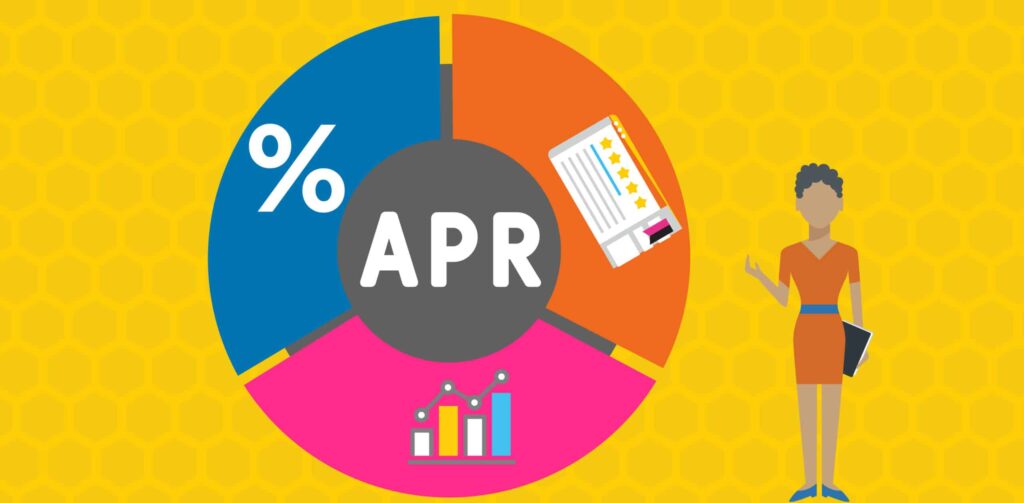An introductory annual percentage rate (APR) is a rate that credit card companies use to draw customers. The rate, also called a “teaser rate,” is usually in effect for a fixed number of months, beginning immediately after a new client opens an account.
It is typically lower than the standard APR and is often as low as 0%. Some credit card companies offer APRs on balance transfers, purchases, or both. Cash advances seldom get an introductory percentage rate. The card issuer generally starts charging interest as soon as the cash advance is made.
Card companies that offer introductory APR offers may incorporate fees and restrictions you should be aware of before applying. Fully understanding the benefits and offer details of a 0 apr credit card can help you obtain a card you can use to help your company meet its financial goals.
What is an Introductory APR on a Credit Card?
An introductory APR on a credit card is a promotional interest rate offered by credit card issuers to attract new cardholders. This special rate is typically much lower than the standard APR and can be as low as 0%.
The introductory APR is available for a specified period, usually ranging from 6 to 21 months. During this time, cardholders can make purchases or balance transfers without paying interest, making it an appealing option for those looking to save money on interest or pay off existing debt.
By taking advantage of this promotional period, you can manage your finances more effectively and reduce the overall cost of borrowing.
Benefits of an Introductory APR
Introductory APRs on an APR credit card can help you save a lot in interest on balance transfers or funding large purchases. Whether you are hoping to cut costs by transferring debt from a high-interest credit card or are looking to make a sizable purchase and pay it off over time, an introductory APR lets you do this without the cost and hassle of late fees or compounded interest.
Pay Down Your Debts Faster with Balance Transfers
A business credit card with a low, or 0%, introductory APR is a good choice if you plan to transfer debt from a higher-interest card. Balance transfers can help you simplify your monthly payments and combine your credit card debt onto one card. When your credit card debt accrues less, or no, interest, your payments will result in the balance being paid down faster.
However, it is crucial to make at least the minimum payment each month to maintain the benefits of the introductory APR and avoid penalties. You’ll want to develop an aggressive repayment strategy to take full advantage of your 0% interest card to ensure you don’t pay interest on that debt. Remember that balance transfers usually have fees attached. Ensure you know what they are and how much you will be charged before signing up for a balance transfer.
Spend Money on Large Purchases and Pay for Them Over Time
A credit card with a 0% or low introductory APR is useful for making a large purchase over time, like:
- Office furniture
- Computers
- Equipment
It is crucial to pay down any outstanding balance before the introductory period ends to avoid interest charges and potential debt accumulation when the standard APR takes effect.
If you strictly adhere to your budget, you may be able to pay off your complete balance before the introductory APR period ends. That way, you don’t have to be concerned about paying the standard interest rate on the things you buy for your business.
Balance Transfers and Introductory APR
Balance transfers are a popular feature of credit cards with introductory APRs. This option allows you to transfer your existing credit card balance to a new card with a lower interest rate, often 0%. By doing so, you can save money on interest and pay off your debt faster. However, it’s important to be aware of balance transfer fees, which typically range from 3% to 5% of the transfer amount. Additionally, the introductory APR may only apply to balance transfers and not to new purchases. Understanding these details can help you make the most of your balance transfer and achieve your financial goals more efficiently.
Understanding the Credit Card Issuers’ Fee Structure
Just because you found a great introductory APR offer doesn’t mean you won’t have to pay fees. If your company’s goal is to pay off its debt by moving it to a low-interest credit card, be sure the new card’s balance transfer fee is taken into account. If you read the fine print, you will likely find specific fees associated with your account. For example, particular card companies charge a large fee for transferring your balance. Those could range from 3% to 5% of the amount transferred. There may also be penalties and fees for returned payments, going over your credit limit, and late payments.
What to Consider Before Applying for a Credit Card with an Introductory APR
Before applying for a credit card with an introductory APR, it’s crucial to consider several factors. First, check your credit score to ensure you qualify for the best offers. Next, review the terms and conditions of the card, including the length of the introductory period, the standard APR, and any balance transfer fees. It’s also essential to consider your financial situation and whether you can afford to pay off the balance within the introductory period. Finally, be aware of any potential drawbacks, such as deferred interest or penalty APRs, which could impact your overall savings. By carefully evaluating these factors, you can choose the right credit card for your needs.
Tips for Maximizing Introductory APR Offers
To maximize introductory APR offers, follow these tips:
- Pay off your balance within the introductory period: This is the most critical step in taking advantage of an introductory APR. Make sure you can afford to pay off the balance before the introductory period ends.
- Make timely payments: Late payments can result in the loss of the introductory APR and the application of a penalty APR.
- Avoid new purchases: If you’re trying to pay off debt, avoid making new purchases on the card, as this can increase your balance and make it harder to pay off.
- Consider a balance transfer: If you have existing credit card debt, consider transferring it to a card with a 0% introductory APR to save money on interest.
By following these tips, you can make the most of your introductory APR offer and achieve your financial goals more effectively.
Common Mistakes to Avoid
When using a credit card with an introductory APR, avoid the following common mistakes:
- Missing payments: Late payments can result in the loss of the introductory APR and the application of a penalty APR.
- Not paying off the balance: Failing to pay off the balance within the introductory period can result in interest charges and a higher APR.
- Making new purchases: Avoid making new purchases on the card, as this can increase your balance and make it harder to pay off.
- Not reviewing the terms and conditions: Failing to review the terms and conditions of the card can result in unexpected fees or interest charges.
By understanding introductory APRs and following these tips, you can make the most of these offers and save money on interest.
Penalty APRs
Another vital fee to acquaint yourself with is the penalty APR. In some cases, the credit card company may apply this special interest rate to your credit card account balance if you are late or miss a payment. This charge would likely be a lot higher than the standard APR you would pay once the introductory period ends. Missing a payment or paying late can cause the card issuer to revoke your 0% APR and replace it with a high-penalty APR. Be sure to ask your credit issuer what the penalty is for missing a payment. That way, you aren’t surprised by a rate jump if something unfortunate should happen.
What Happens to My APR After the Introductory Period?
Introductory APR offers generally span anywhere from six to 21 months. As soon as the initial period ends, the standard interest rate takes its place. This rate can be found in your cardholder agreement but generally depends on your creditworthiness. When your introductory APR comes to a close, find and understand the rate for balance transfers and new purchases (some cards provide 0% for both, while others don’t.)
- Introductory APRs for balance transfers — This APR is applied to the amount you transferred onto your new card from other credit cards. As soon as an introductory balance transfer APR is over; the higher APR rate is applied to the remaining balance. For example, if you transferred $10,000 to your new card and paid off $3,000 during the introductory period, you would start paying on the remaining $7,000 as soon as the teaser rate ends.
- Introductory APRs for purchases — This rate applies to the everyday business purchases you make with your card. Once the introductory APR for purchases ends, the higher rate kicks in. Depending on creditworthiness, this variable rate often ranges between 13% and 24%.
Find out when the intro period ends and have your balance paid off completely to avoid interest.
Find the Right Card for Your Financial Goals
Be sure to do your homework and find a business credit card that aligns with your company’s financial goals. Decide whether you need a card with a long introductory period, charges little to no fees, or offers robust rewards. Low introductory APR credit cards are usually offered to applicants with excellent credit scores. The standard percentage rate that kicks in when the introductory period ends typically reflects how creditworthy you appear to the credit card issuer. A lower rate means they view you or your firm as having lower borrower risk.



























